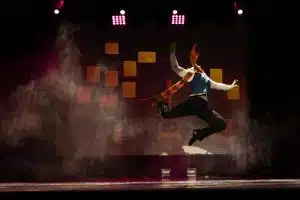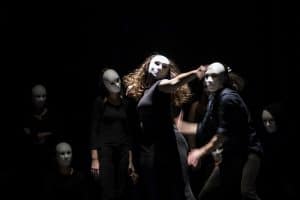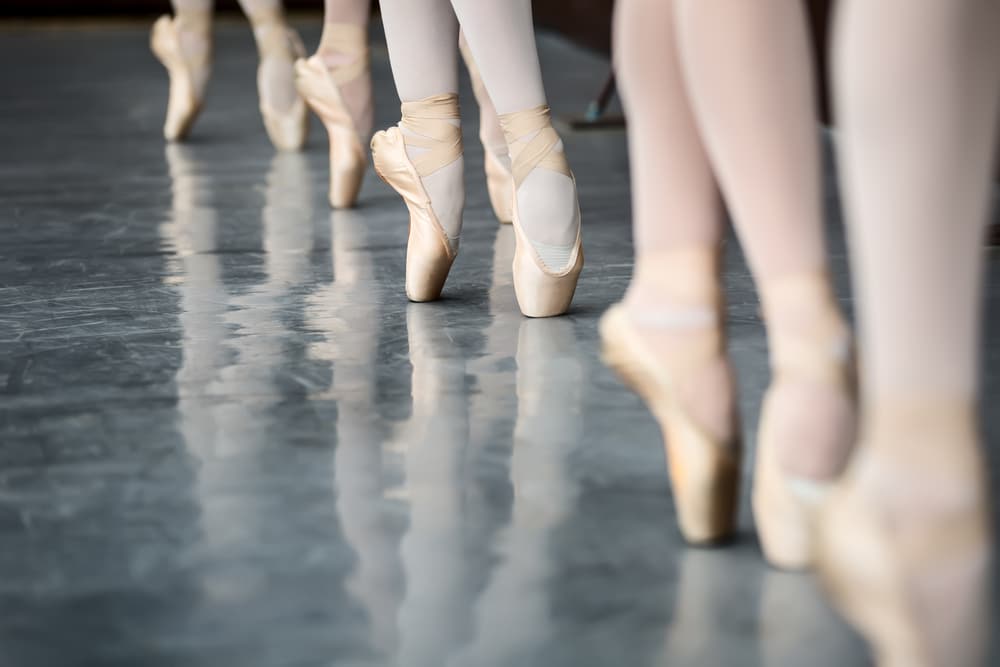Discover the Best Colleges with Dance Programs
With its precision, emotion, and grace, the realm of dance invites you to a world of pulsating beats and graceful pirouettes. Embarking on this journey of self-expression requires more than just talent. It requires proper guidance, exposure, and in-depth knowledge of various dance forms. To acquire these, a formal education in this domain is instrumental. Having recognized this, numerous esteemed colleges across the continent have rolled out specialized dance programs.
This article will guide you toward making an informed decision about choosing colleges with the best dance programs for your unique interests and career aspirations.
Understanding the Importance of Specialized Dance Programs
The Role of Dance in Higher Education
Dance, an expressive art form, plays an essential role in higher education. It aids in the development of critical thinking, creativity, and effective communication skills. Moreover, a well-rounded dance program helps foster cultural diversity through an array of dance genres that span regions and traditions worldwide.
Through the study of dance, students learn the technical aspects of movement and gain a deeper understanding of the historical and cultural significance of different dance forms. They explore the rich tapestry of human expression and connect with diverse communities and traditions.

Furthermore, dance programs provide students a platform to explore their creativity and develop their unique artistic voice. They learn to express their emotions, thoughts, and ideas through movement, allowing personal growth and self-discovery.
Additionally, dance education encourages collaboration and teamwork. Students work together to create choreography, perform in ensembles, and support one another in their artistic endeavors. These experiences foster a sense of camaraderie and teach valuable skills that can be applied in any professional setting.
Benefits of Pursuing a Dance Degree
Dance degrees offer a plethora of benefits, both tangible and intangible. On one hand, they equip students with technical skills, movement mechanics, and detailed knowledge of various dance forms. Students learn proper body alignment, coordination, and musicality, enabling them to execute movements with precision and grace.
Moreover, pursuing a dance degree cultivates qualities such as perseverance, commitment, and versatility. Students learn the importance of discipline and hard work as they strive to master complex choreography and refine their technique. They develop resilience in the face of challenges and setbacks, building the mental fortitude necessary to succeed in any professional field.
A dance degree also allows students to engage with like-minded individuals who share their passion for dance. They form lifelong friendships and create a supportive network within the industry. This network can be invaluable in terms of collaboration, mentorship, and future career opportunities.
Furthermore, dance programs often facilitate internships, workshops, and guest artist residencies, allowing students to gain firsthand experience and exposure to the professional dance world. These opportunities provide valuable insights into the industry, helping students navigate their career paths and make informed decisions.
Overall, specialized dance programs in higher education contribute to the development of technical skills but also foster personal growth, cultural understanding, and professional readiness. By embracing the art of dance, students embark on a transformative journey that prepares them for a fulfilling and successful future.
Key Factors to Consider When Choosing a Dance Program
Choosing the right dance program is a critical decision for aspiring dancers. It sets the foundation for their education and future career prospects. While there are many factors to consider, here are some key ones that should not be overlooked:
Accreditation and Reputation
One of the first things to look for in a dance program is accreditation. Accreditation ensures that the program meets certain standards of quality and excellence. It is an important indicator that the industry recognizes and respects the program.
Furthermore, reputation plays a significant role in the dance world. A program with a positive reputation is more likely to attract top-notch faculty and provide valuable networking opportunities. It can also enhance your chances of securing employment after graduation.
When researching a dance program, take the time to read reviews and talk to current students and alumni. Their insights can give you a better understanding the program’s strengths and weaknesses.
Faculty Expertise and Experience
The expertise and experience of the faculty are crucial factors to consider when choosing a dance program. Instructors should have a strong academic background and substantial professional experience in the dance industry.

Experienced faculty members bring a wealth of knowledge and insights into the classroom. They can provide valuable guidance, mentorship, and industry connections that greatly benefit students in their dance careers.
When researching a dance program, take the time to review the faculty’s biographies and credentials. Look for instructors who have worked with reputable dance companies, and choreographers or have a successful performance career. Their expertise and connections can open doors for you in the dance world.
Facilities and Resources
A dance program’s facilities and resources are essential for a well-rounded education. Look for programs that provide well-equipped studios with proper flooring, mirrors, and sound systems. These facilities create an optimal environment for dance practice and performance.
In addition to studios, access to professional standard performance spaces is crucial. These spaces allow students to showcase their talents and gain valuable performance experience. They also provide opportunities for collaboration with other artists and exposure to the wider dance community.
State-of-the-art technology is another important aspect to consider. Dance programs that offer video recording and editing equipment, motion capture technology, and other digital resources can enhance the learning experience and prepare students for the evolving demands of the dance industry.
Lastly, additional resources, such as a comprehensive library of dance-related literature and videos, can further supplement the learning process. A well-stocked library allows students to deepen their knowledge of dance history, theory, and choreography.
Remember, choosing a dance program is a personal decision that should align with your goals and aspirations. Take the time to research and visit different programs, talk to faculty and students, and consider how each program aligns with your individual needs and interests. By carefully considering these key factors, you can make an informed decision that sets you on the path to a successful dance career.
Overview of Top-Ranked Dance Colleges
College is the first step towards a professional dance career for many high school students, and whether you plan to concentrate on contemporary or ballet, it is essential to find a program tailored to your personal ambitions. The following is an introduction to some of the country’s most prestigious colleges with dance programs.
Juilliard School
The Juilliard School, a cornerstone in artistic education, has been praised numerous times throughout its illustrious history. Its accomplishments burgeon continually, fortifying its well-deserved reputation of prominence and distinction.
Paul Taylor, an early graduate and subsequent “superstar” in the dance realm, ventured into the world with his credentials from Juilliard, graduating just two years after its dance division was established in 1951. His ensemble, the Paul Taylor Dance Company, continues to operate and embarks on tours, presenting some of his 144 original pieces to audiences worldwide.
Today, Juilliard parades a constellation of luminaries in dance, with faculty members like the celebrated performer and pedagogue Jeff Edwards, esteemed for his prowess and scholarly engagement with Balanchine’s works. They have etched their marks with performances in globally renowned dance companies and choreographed for Broadway and beyond.
Being nested in New York City often hailed as the U.S.’s cultural hub, Juilliard students bask in abundant off-campus performance options, gracing the stages of prestigious venues like the Guggenheim, the Whitney, the Metropolitan Museum of Art, and MoMA, among others.
New York University Tisch School of the Arts
Among colleges hosting dance programs, the New York University Tisch School of the Arts stands tall as one of the nation’s foremost performing arts schools, especially for a pre-professional dancer seeking conservatory-level instruction within a wholesome university experience.
NYU dance students engage with esteemed instructors and collaborate with choreographers hailed as titans in contemporary dance. The Second Avenue Dance Company, an NYU group, offers students a platform to perform new and pre-existing works choreographed by master artists, forging precious collaboration opportunities with these visiting choreographers.
Seán Curran, a widely recognized dancer and choreographer and the current Chair of the Dance Program at NYU Tisch boasts teaching credits spanning over 100 institutions, such as the Boston Conservatory and the Bates Dance Festival, and has been lauded with a Bessie Award in 1985.
Fordham University
In the esteemed dance circles of the United States, Alvin Ailey’s name resounds with particular reverence, and this visionary, one of the 20th century’s most pivotal choreographers, founded the Ailey School. Often hailed as the country’s premier dance training facility, it coexists symbiotically with Fordham University, crafting a unique program that sees students concurrently enrolled full-time at both establishments. This integration synthesizes Fordham’s academic rigor with the progressive expertise of the Ailey School of Dance faculty and its technologically advanced studios.
Both institutions are comfortably nestled in Lincoln Center, often perceived as Manhattan’s vibrant cultural heartbeat.
Butler University
With its dance program perennially perched among the nation’s top 10, Butler University’s Jordan College of the Arts not only garners respect as one of the preeminent arts colleges in the United States but also flaunts a striking 94% placement rate for its graduating students.

Facilities at Butler encompass five fully equipped studios and a dedicated conditioning room for dance students, facilitated through a partnership with St. Vincent Sports Performance, which also grants students access to an athletic trainer. This alliance ensures prudent guidance in injury prevention, rehabilitation, and overall fitness objectives.
Oklahoma City University
Oklahoma City University’s Ann Lacy School of Dance and Entertainment offers an eclectic array of degrees tailored to future dance professionals, including a Bachelor of Performing Arts, Bachelor of Dance Management, Bachelor of Dance Pedagogy, and Bachelor of Entertainment.
A pinnacle for those seeking a career in dance or related performing arts, OKCU garners serious consideration owing to its exhaustive range of dance-centric academic offerings. The Gaylord Dance Center at Oklahoma City University is heralded as arguably the premier instructional facility for dance in the United States, boasting eight dance studios, dressing facilities, student lounges, and a sprawling atrium.
University of North Carolina School of the Arts (UNCSA)
Boasting a distinguished roster of alumni and being hailed as one of the premier performing arts schools nationwide, UNCSA provides fertile grounds for aspiring artists. Those immersed in the Choreographic Institute at UNCSA embark on unique journeys, forging collaborations with burgeoning professional choreographers—identified as “fellows” within the program. In its third year, the fellowship recently welcomed its latest ensemble of fellows, including a UNCSA alum.
UNCSA offers high school students college preparatory and academic curricula in a unique educational blend. Amongst its famed alumni, Gillian Murphy, who navigated through UNCSA’s high school division, has become one of the most notable graduates from the dance program.
University of Arizona
Consistently recognized for its exemplary training in both contemporary and classical dance, the University of Arizona’s School of Dance allows students to pursue Bachelor of Fine Arts or Master of Fine Arts degrees. The school’s student organization, “The Dance Collective,” symbolizes the culture of the institution. While open to all students at the university, its predominant membership comprises dance majors. Their mission radiates dance across the campus and the city of Tucson, and they also sponsor the annual Arizona Jazz Dance Showcase.
Pioneering in student wellness since 2013, the program has provided dance students with ongoing access to a musculoskeletal clinic, enhancing their overall performance while aiming to minimize injuries.
Southern Methodist University
Collaboration with the Texas Ballet Theater, North Texas’ largest professional dance company, which enlightens tens of thousands of patrons in the Dallas/Fort Worth creative nexus, marks a pivotal aspect of the program at Southern Methodist University. Students are presented with chances to showcase their talents in several of Greater Dallas’ historic arts venues, including the Winspear Opera House and City Performance Hall, solidifying the school’s reputation in both classical and jazz ballet domains.
Point Park University
Being among the most competitive dance programs worldwide, Point Park University is renowned for its distinguished faculty. Chair of the Dance Program, Garfield Lemonius, has worked with esteemed artists such as Chuck Davis, Alonzo King, and Bruce Wood. The George Roland White Performance Center, a LEED-certified $16,000,000 facility, features an impressive 44,000 square feet dedicated to dance, establishing it as an exemplary facility for dancers.
Cornish College of the Arts
The physically intensive Bachelor of Fine Arts program at Cornish College of the Arts demands students spend between six and eight hours per day in the college’s studios. The appeal of Cornish’s program is so robust that even professional dancers routinely apply. Through the “Professional Dancers Program,” experienced dancers can attain their BFA in under two years. A hallmark of Cornish education is its collaborative opportunities, where dance majors frequently interact with peers from other performing arts disciplines, such as music and theater.
Exploring Different Dance Genres and Their Training
Dance is a universal language that transcends cultures and brings people together. It is a form of artistic expression that allows individuals to communicate their emotions, stories, and ideas through movement. There are various dance genres, each with unique styles, techniques, and training methods. Let’s delve into some of the most popular genres and the programs that specialize in them.
Classical Ballet Programs
Classical ballet programs focus on teaching traditional dance techniques that trace back to the courts of Louis XIV. The elegance, precision, and grace of ballet have captivated audiences for centuries. Schools like Juilliard take pride in their rigorous ballet programs.

These programs provide comprehensive training in ballet, including ballet technique, pointe work, pas de deux, and variations. Students also have the opportunity to work closely with professional ballet companies, gaining invaluable experience and exposure to the world of classical ballet. Additionally, these programs often offer opportunities for students to perform in classical ballet productions, bringing the magic of this art form to life on stage.
Modern and Contemporary Dance Programs
Modern and contemporary dance programs push boundaries by fostering creativity and experimentation. Unlike classical ballet, which adheres to strict techniques and forms, modern and contemporary dance focuses on the individual’s expression and the exploration of new movement ideas. Institutions like the New York University’s Tisch School of the Arts offer substantial training in this genre of dance.
Students in these programs learn a range of techniques, including Graham, Cunningham, Limón, and release-based techniques. They are encouraged to develop their unique movement vocabulary and explore innovative storytelling through dance. These programs also provide opportunities for students to collaborate with choreographers and perform in cutting-edge contemporary dance productions.
World Dance Programs (African, Asian, Latin, etc.)
World Dance programs offer an understanding of dance forms from across the globe, promoting cultural diversity and inclusivity. These programs celebrate the rich heritage and traditions of various cultures through dance. Students in these programs learn the techniques and movements of these dance forms and gain a deeper understanding of their cultural significance. They explore the history, rituals, and storytelling elements associated with each dance style, fostering a sense of appreciation and respect for different cultures.
Whatever the chosen genre, choosing a college dance program is an exciting journey, promising growth, discovery, and a transformative education. Whether you aspire to become a professional ballet dancer, a contemporary dance artist, or an ambassador of world dance, these specialized programs provide the training, mentorship, and opportunities needed to pursue your passion and make a meaningful impact in the world of dance.
Final Thoughts
Navigating through the intricate tapestry of colleges offering outstanding dance programs reveals a universe where tradition and innovation dance in harmonious balance. From Juilliard’s historic prominence to the modern nuances of the University of Arizona, aspiring dancers are presented with a rich palette of educational pathways, each offering a unique rhythm, style, and legacy in the realm of dance education.
These institutions sculpt students into accomplished dancers and mold them into holistic artists, prepared to grace the world’s stages with their creativity, resilience, and eloquence. Here’s to finding an institution and a home where every dancer can weave their own vibrant thread into the ever-evolving tapestry of the dance world.
If you need help putting the finishing touches on your college applications, at AdmissionSight, we have over 10 years of experience guiding students through the competitive admissions process.
AdmissionSight can help you put your best foot forward when applying to college this fall. Contact us today for more information on our services.





































